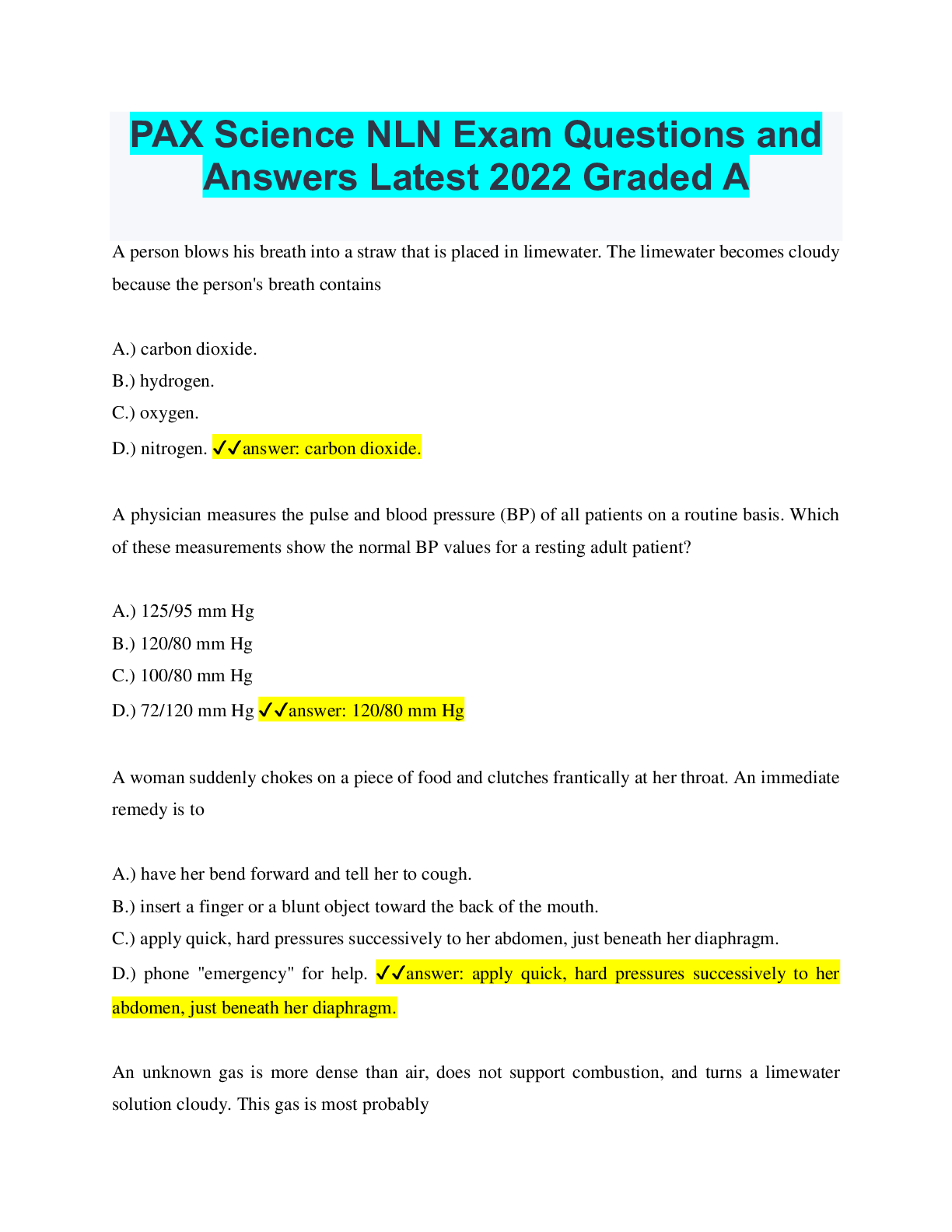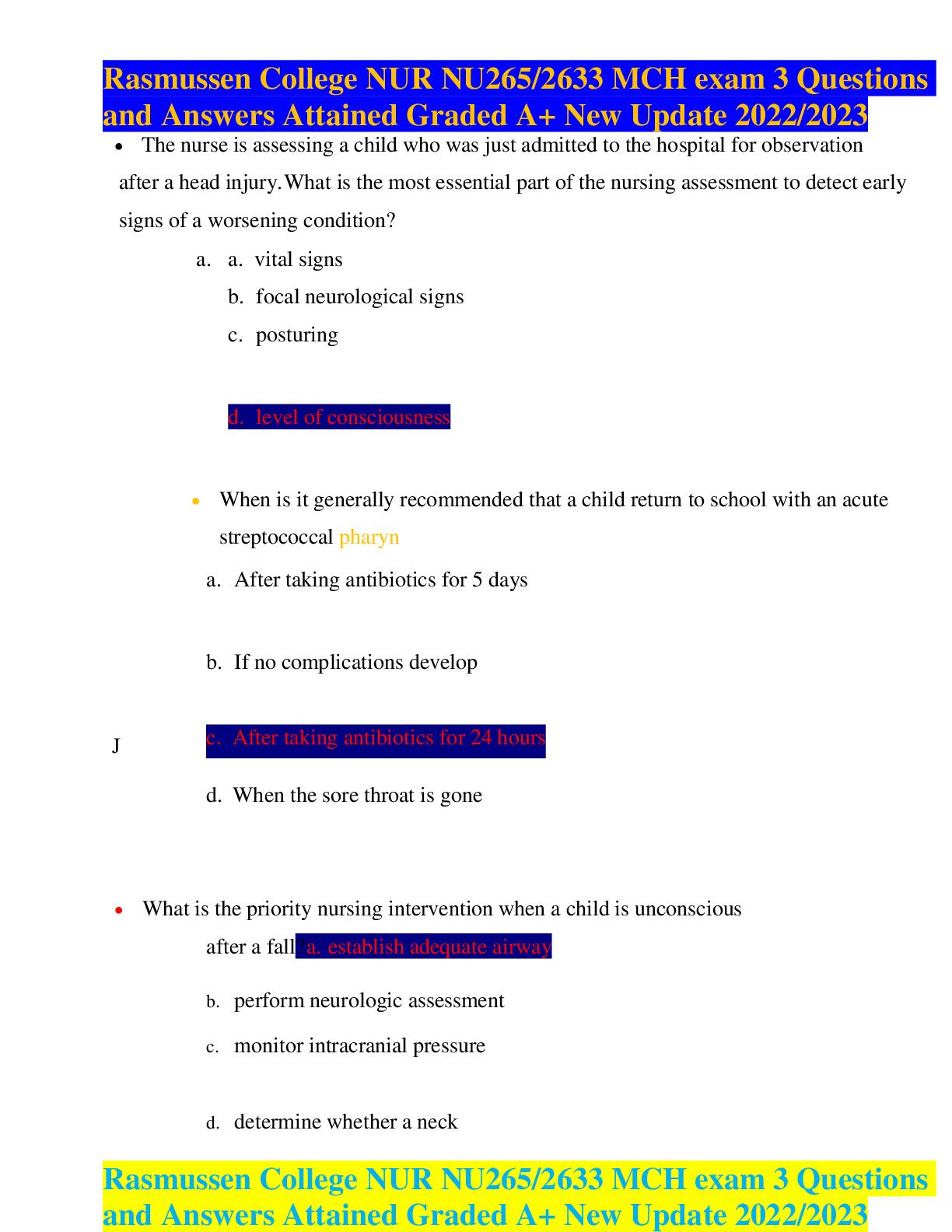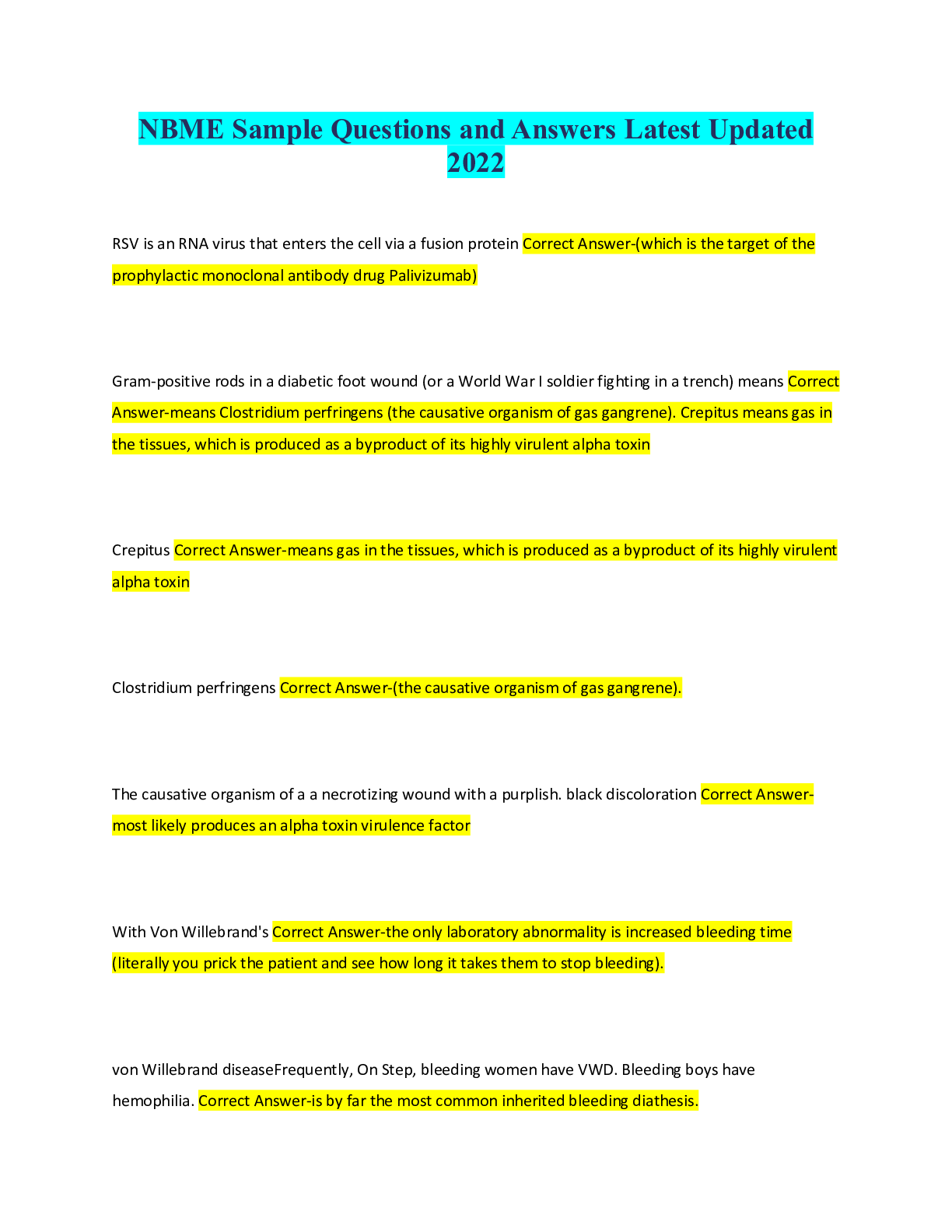Biology > A-Level Mark Scheme > HESI GERONTOLOGY QUESTIONS AND ANSWERS LATEST 2022 GRADED A (All)
HESI GERONTOLOGY QUESTIONS AND ANSWERS LATEST 2022 GRADED A
Document Content and Description Below
The cleansing of the stomach with solution delivered through a nasogastric tube is known as what? A) Gavage. B) Emesis. C) Lavage. D) Stomach pumping. Correct Answer-C Correct Answer: Lavage Gast... ric lavage is used to cleanse the stomach of a poison, overdose of medication, or other toxic substance. It is delivered through a nasogastric tube. You are providing care to a patient who has recently begun dialysis. Her daughter, with whom she lives and who prepares many of her meals, asks what types of foods she should incorporate into her diet and which she should avoid. Which of the following is NOT a food that this patient should be advised to avoid? A) Avocado. B) Lean red meat. C) Dried fruit. D) Bananas. Correct Answer-B Correct Answer: Lean red meat Dialysis patients are encouraged to eat lean meat, including red meat. High quality proteins produce less waste and help the body heal and maintain regular processes. Dialysis patients should avoid foods high in potassium, including avocado, banana, and dried fruit, and should eat other potassium-containing foods in moderation. Your 89-year-old patient presents with dyspepsia and nausea. After testing, you determine she is positive for Peptic Ulcer Disease. Of the following, which would LEAST likely be a differential diagnosis for Peptic Ulcer Disease? A) Cholecystitis. B) Migraines. C) Gastric carcinoma. D) Cardiovascular disease. Correct Answer-B Correct answer: Migraines Peptic Ulcer Disease is a gastrointestinal disorder. Other differential diagnoses of the condition are pancreatitis and biliary tract disease. There are a good many diseases affecting the elderly that are the result of smoking. Counseling regarding smoking cessation is part of the GNP's job. The components of brief intervention for treating tobacco use are: A) Counsel, Document, Caution, Describe, Demonstrate B) Advise, Confer, Describe, Document, Prescribe C) Advise, Counsel, Intervene, Prescribe, Follow-up D) Ask, Advise, Assess, Assist, Arrange Correct Answer-D Correct Answer: Ask, Advise, Assess, Assist, Arrange Ask about tobacco use, Advise to quit, Assess willingness to make an attempt to quit, Assist in this quit attempt. Arrange a follow-up. Mrs. Frasier, an 50-year-old patient, presents with a mosquito bite that she is concerned about. How do you diagnose this? A) Cyst. B) Bulla. C) Wheal. D) Plaques. Correct Answer-C Correct answer: Wheal Cyst: encapsulated, fluid-filled mass that varies in size. Bulla: fluid-filled, elevated, circumscribed lesion that's larger than 5mm. Wheal: circumscribed, reddening with transient elevation lesion that's 0.5 to 10mm diameter. Plaques: usually a grouping of papules; elevated and a variety of shapes; larger than 5mm. Mr. French asks the GNP the maximum number he can have for his LDL Cholesterol level in order to be considered at a borderline high amount. What answer does she give him? A) 62 mg/dL. B) 159 mg/dL. C) 83 mg/dL. D) 95 mg/dL. Correct Answer-B Correct Answer: 159 mg/dL. The following LDL cholesterol guidelines are outlined by the American Heart Association: Less than 100 mg/dL = Optimal 100-129 mg/dL = Near or above optimal 130-159 mg/dL = Borderline high 160-189 mg/dL = High 190 mg/dL and above = Very high In order for effective teaching to take place, it is crucial that the GNP use the proper teaching style for each patient. What teaching style would BEST suit a patient with a "Dependent Learner" style? A) Facilitator. B) Delegator. C) Authority, expert. D) Salesperson, motivator. Correct Answer-C Correct answer: Authority, expert Matching teaching style (TS) to learning style (LS) is crucial for effective communication. The following are the BEST matches: TS LS Authority Dependent Motivator Interested Facilitator Involved Delegator Self-directed Ms. Chatham, a 65-year-old patient is determined to have a systolic blood pressure reading of 125. This patient is ______. A) Prehypertensive. B) Stage I Hypertension. C) Stage II Hypertension. D) Normal. Correct Answer-A Correct Answer: Prehypertensive [Show More]
Last updated: 5 hours ago
Preview 1 out of 48 pages

Loading document previews ...
Buy this document to get the full access instantly
Instant Download Access after purchase
Add to cartInstant download
We Accept:

Reviews( 0 )
$9.00
Document information
Connected school, study & course
About the document
Uploaded On
Jul 16, 2024
Number of pages
48
Written in
Additional information
This document has been written for:
Uploaded
Jul 16, 2024
Downloads
0
Views
5


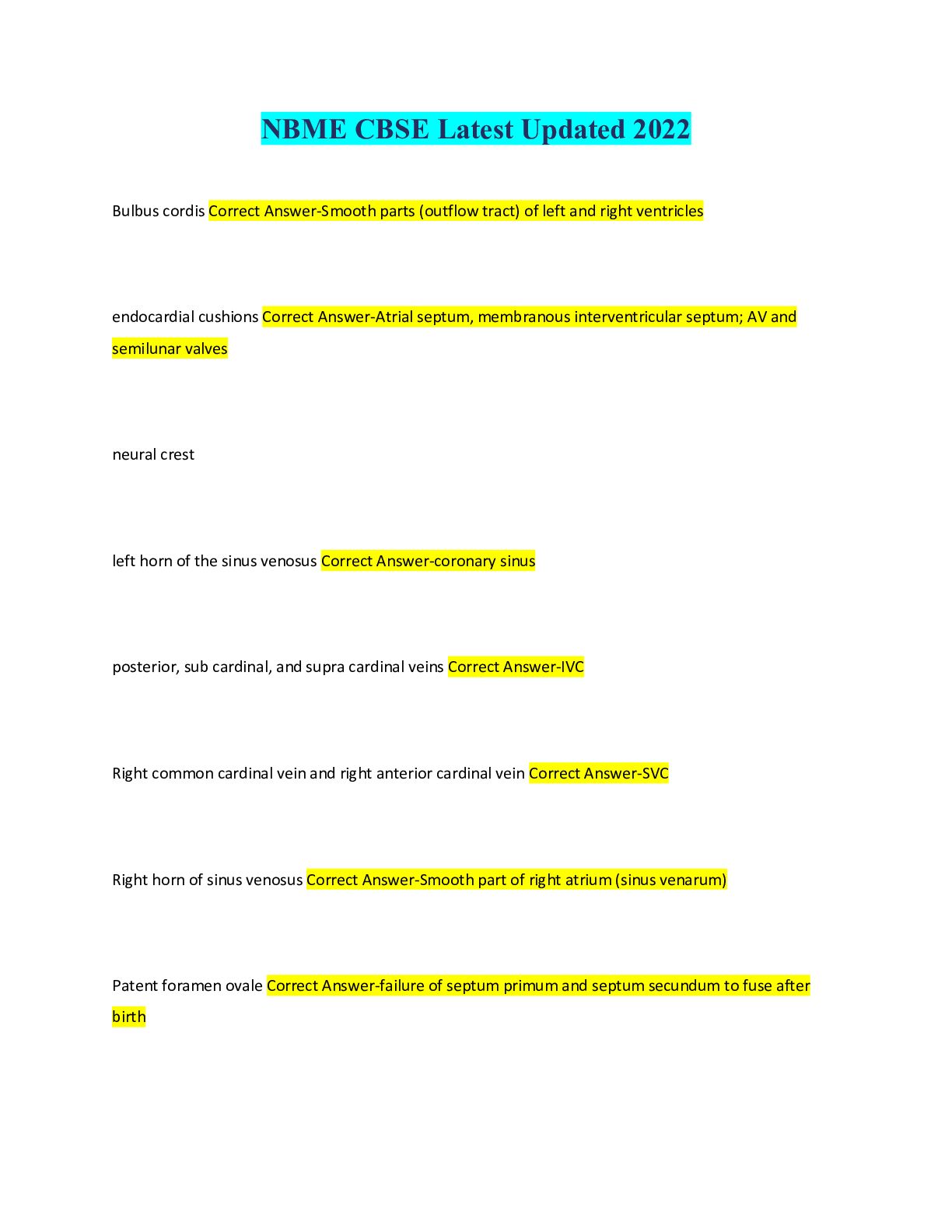
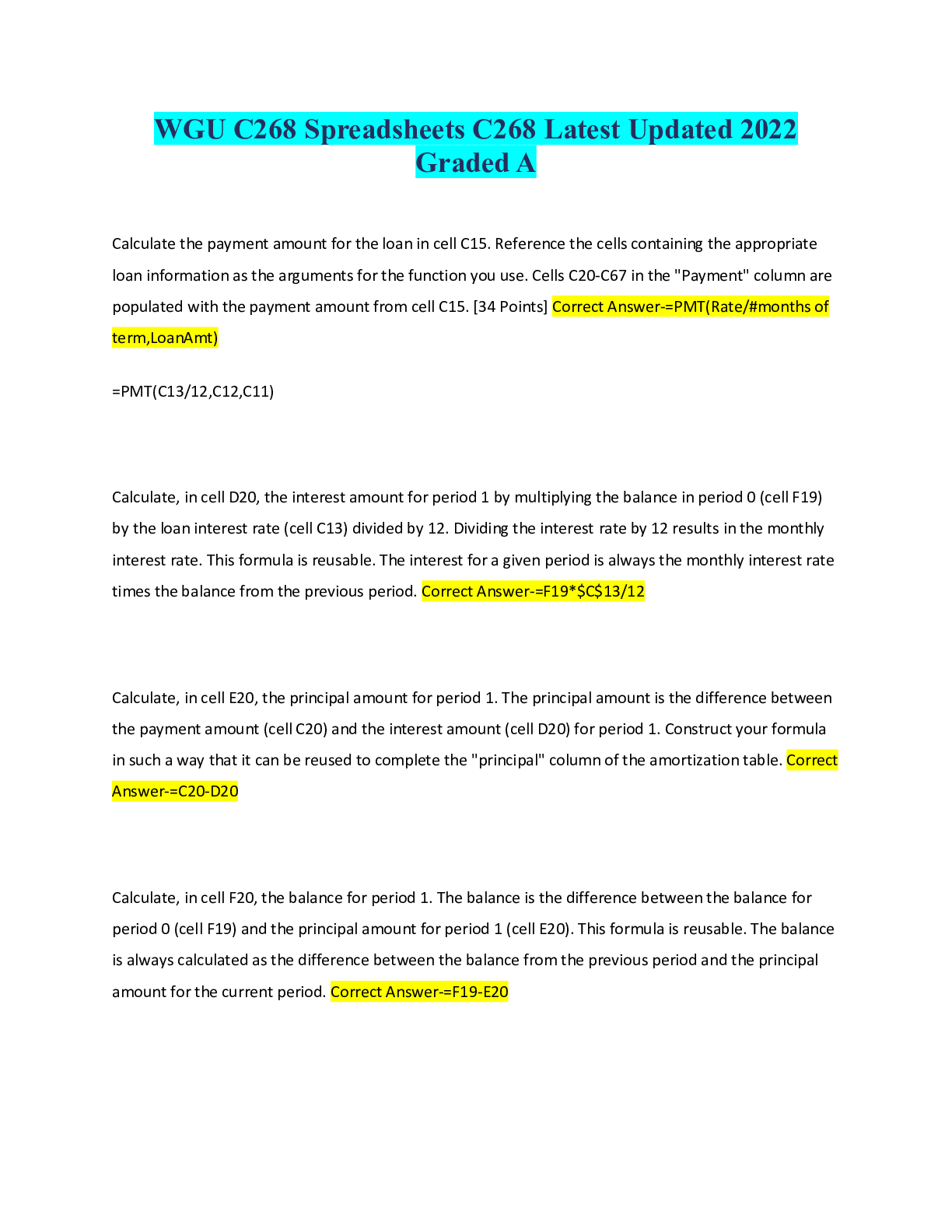
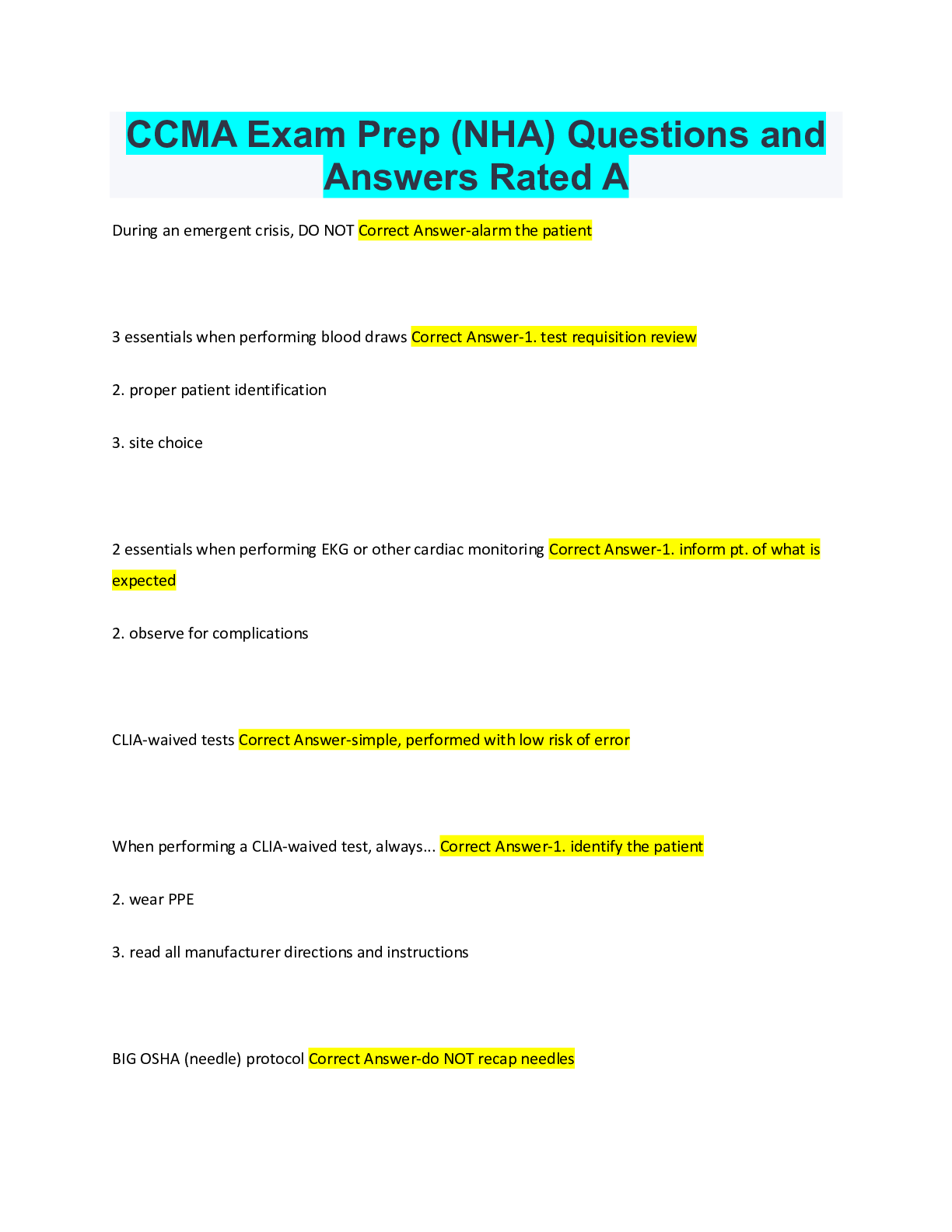
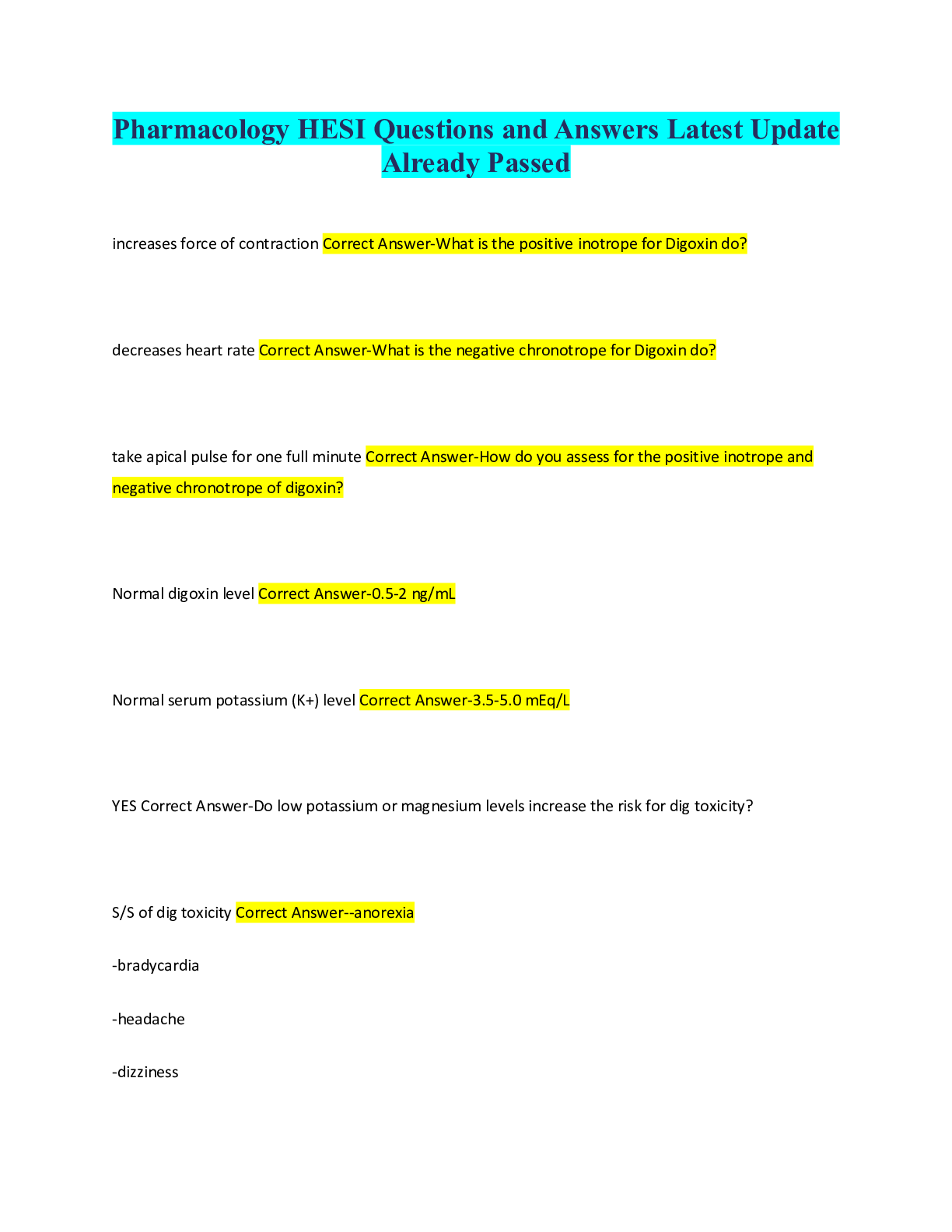
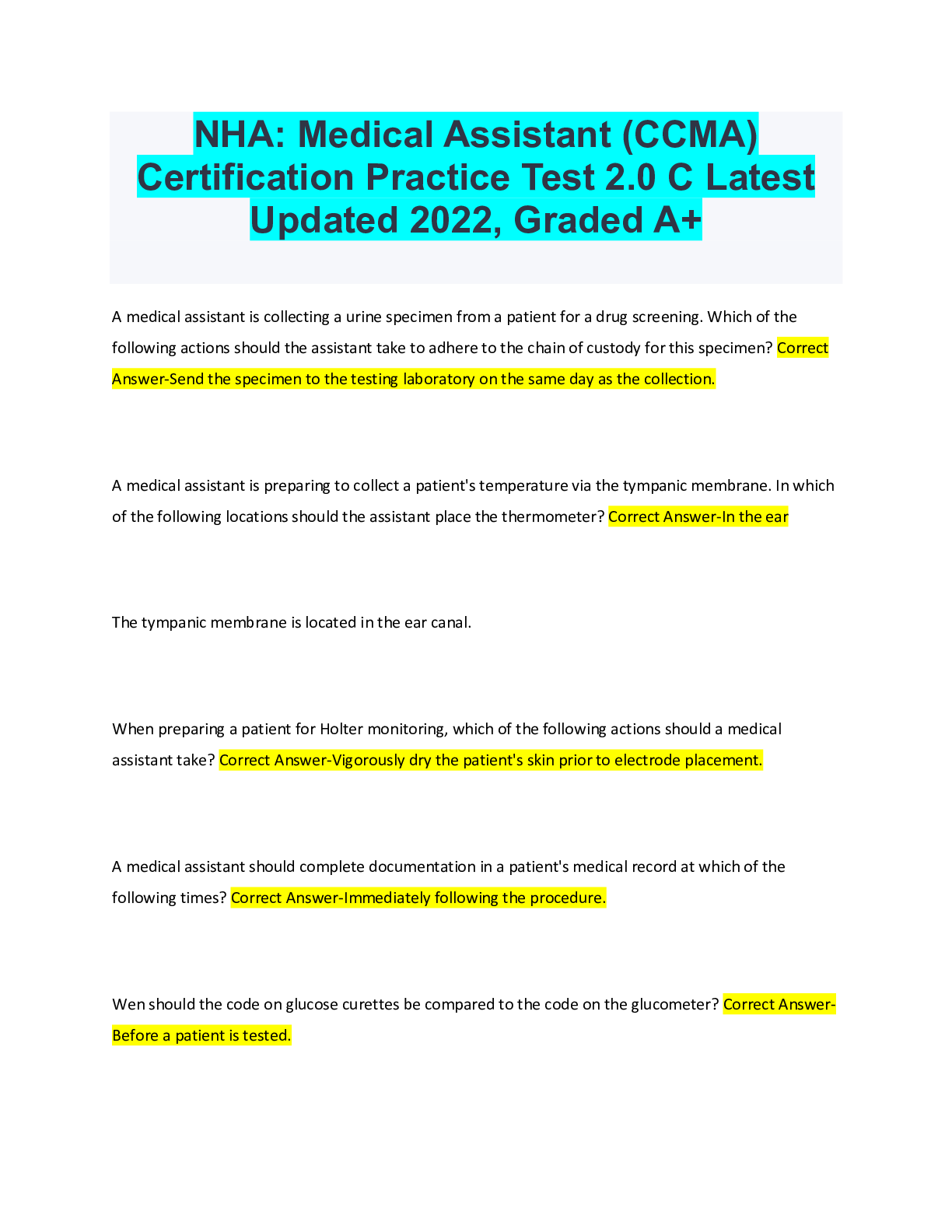
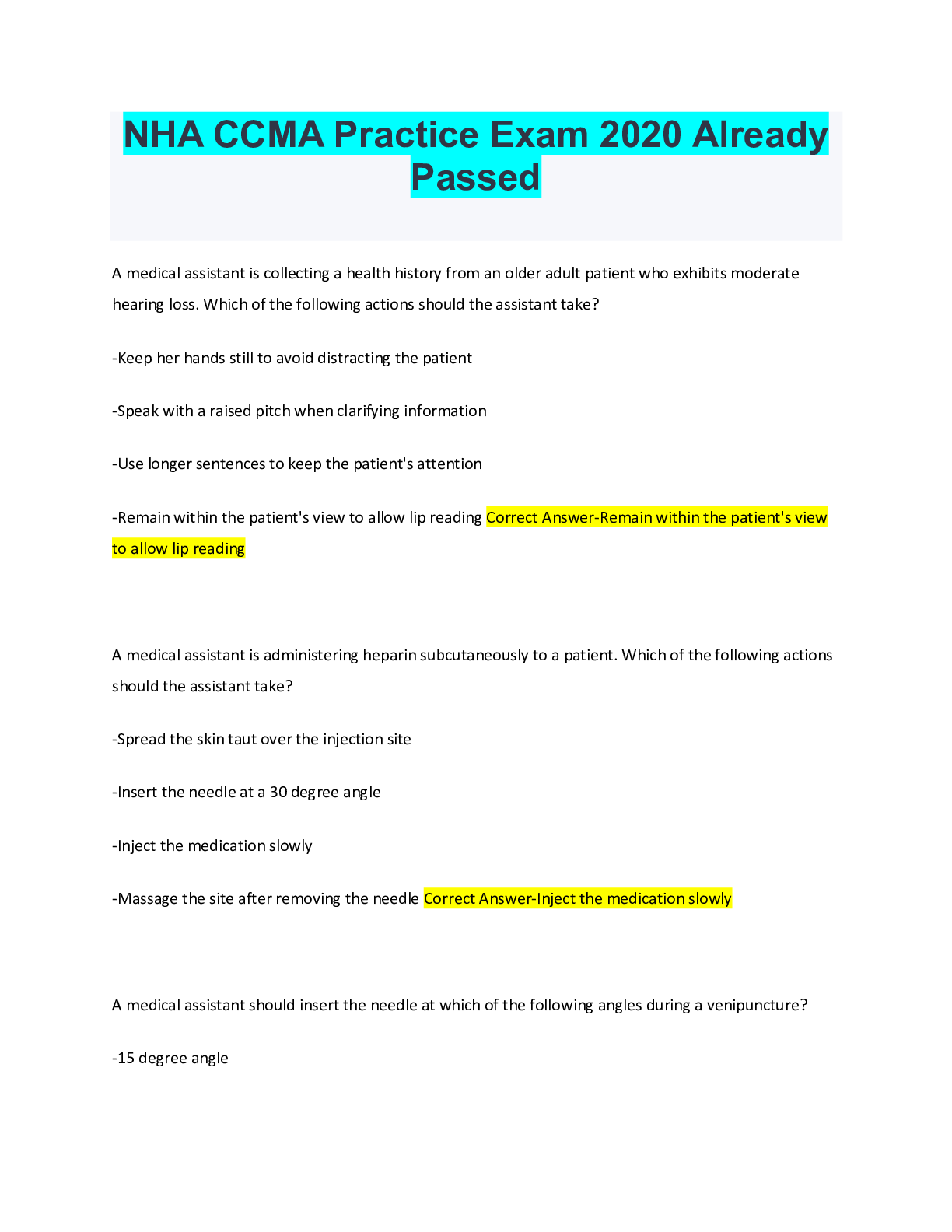
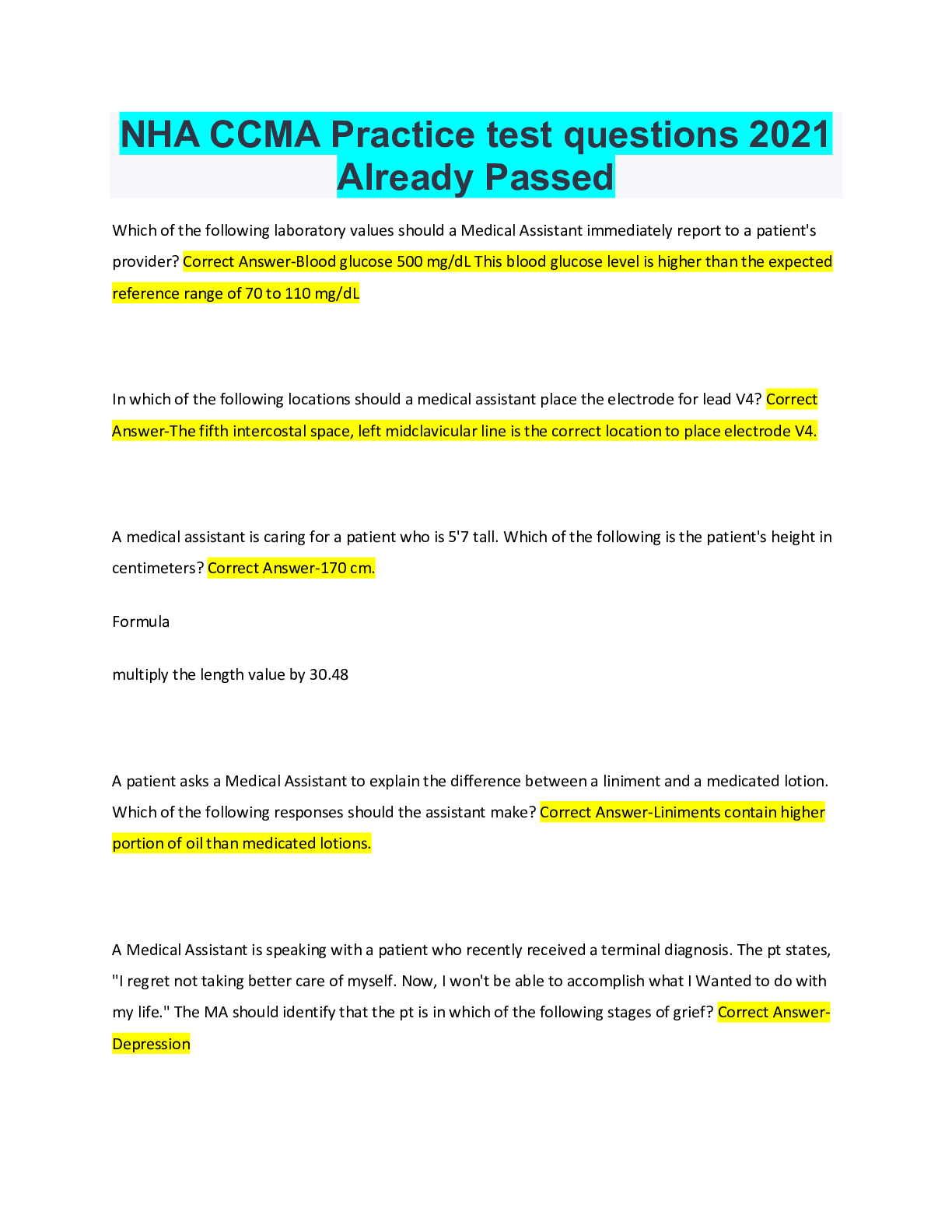
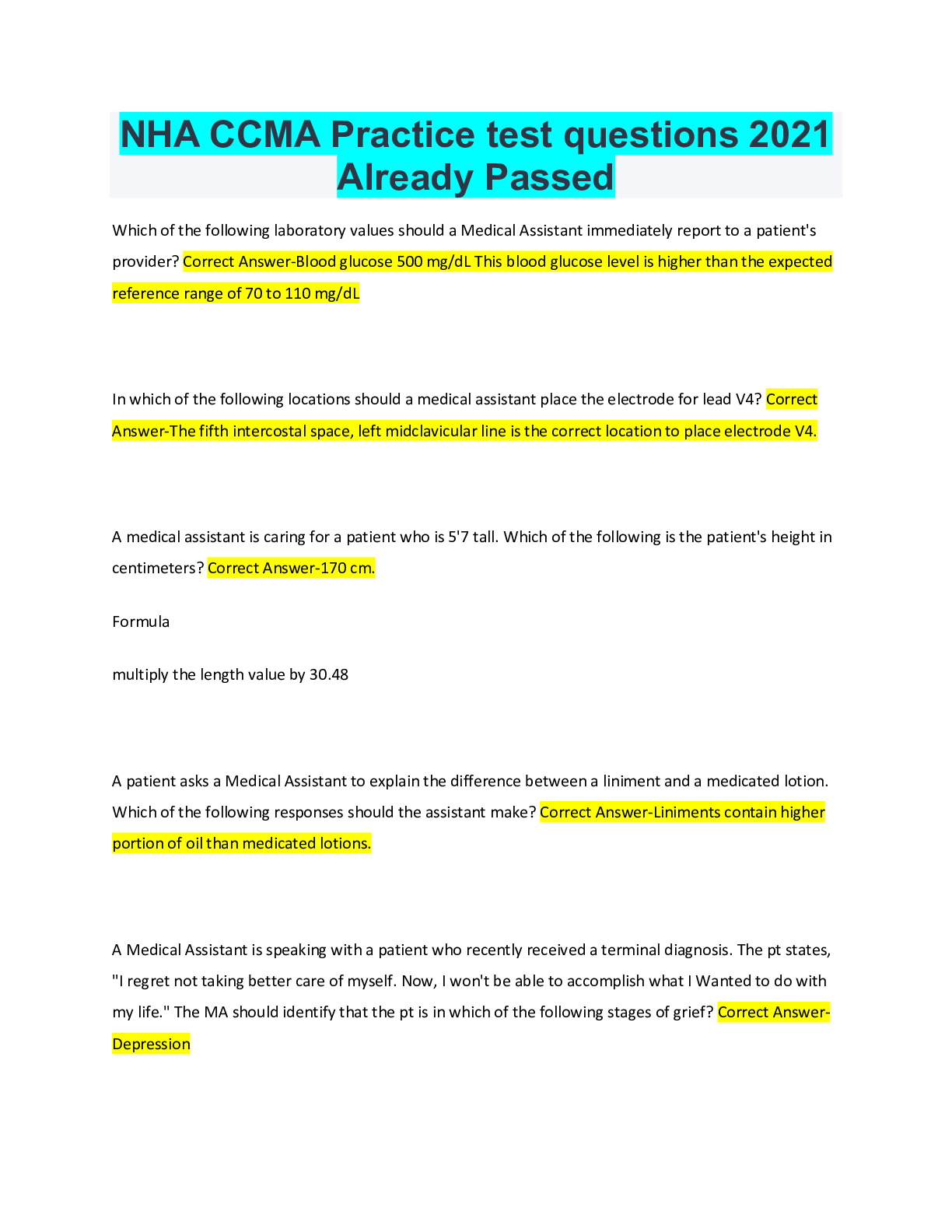
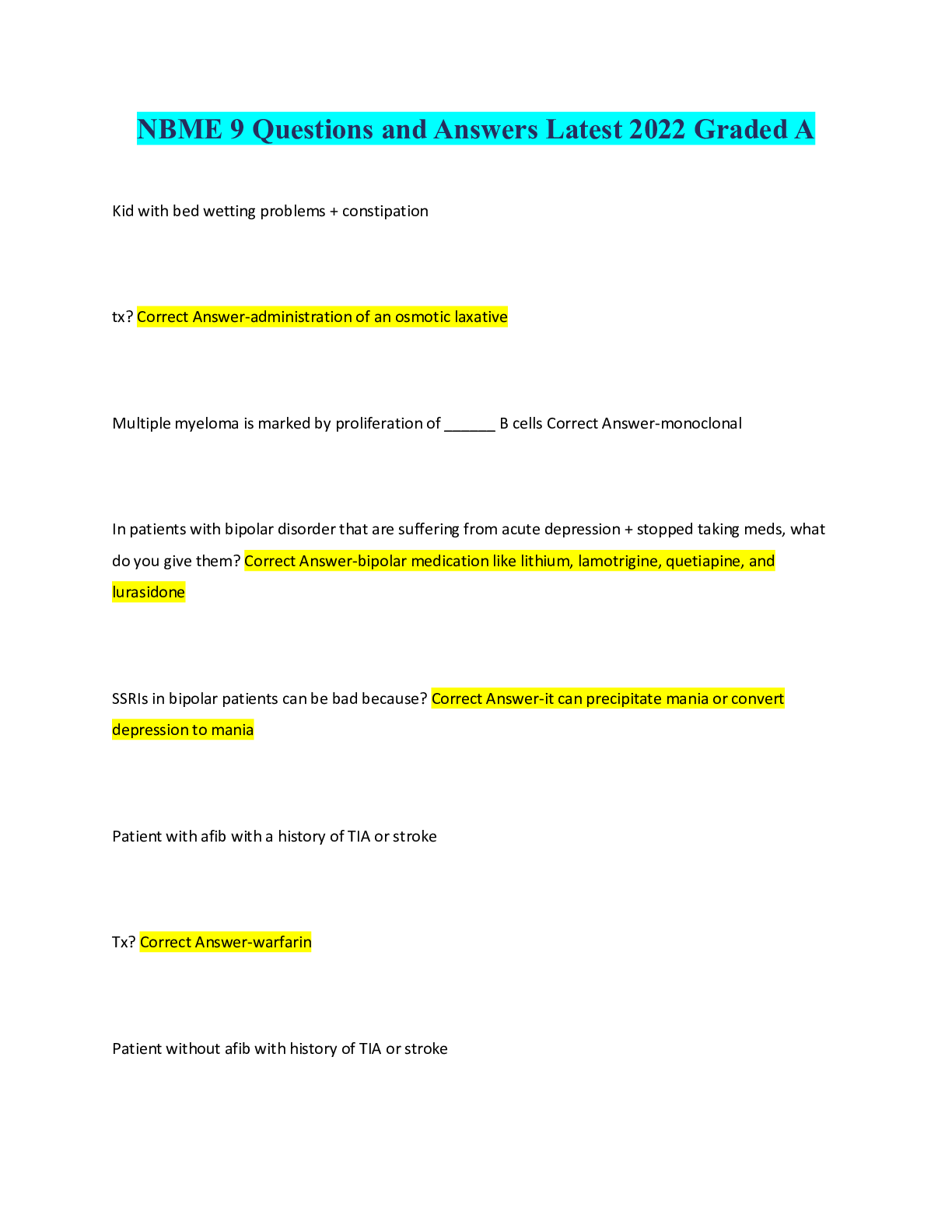

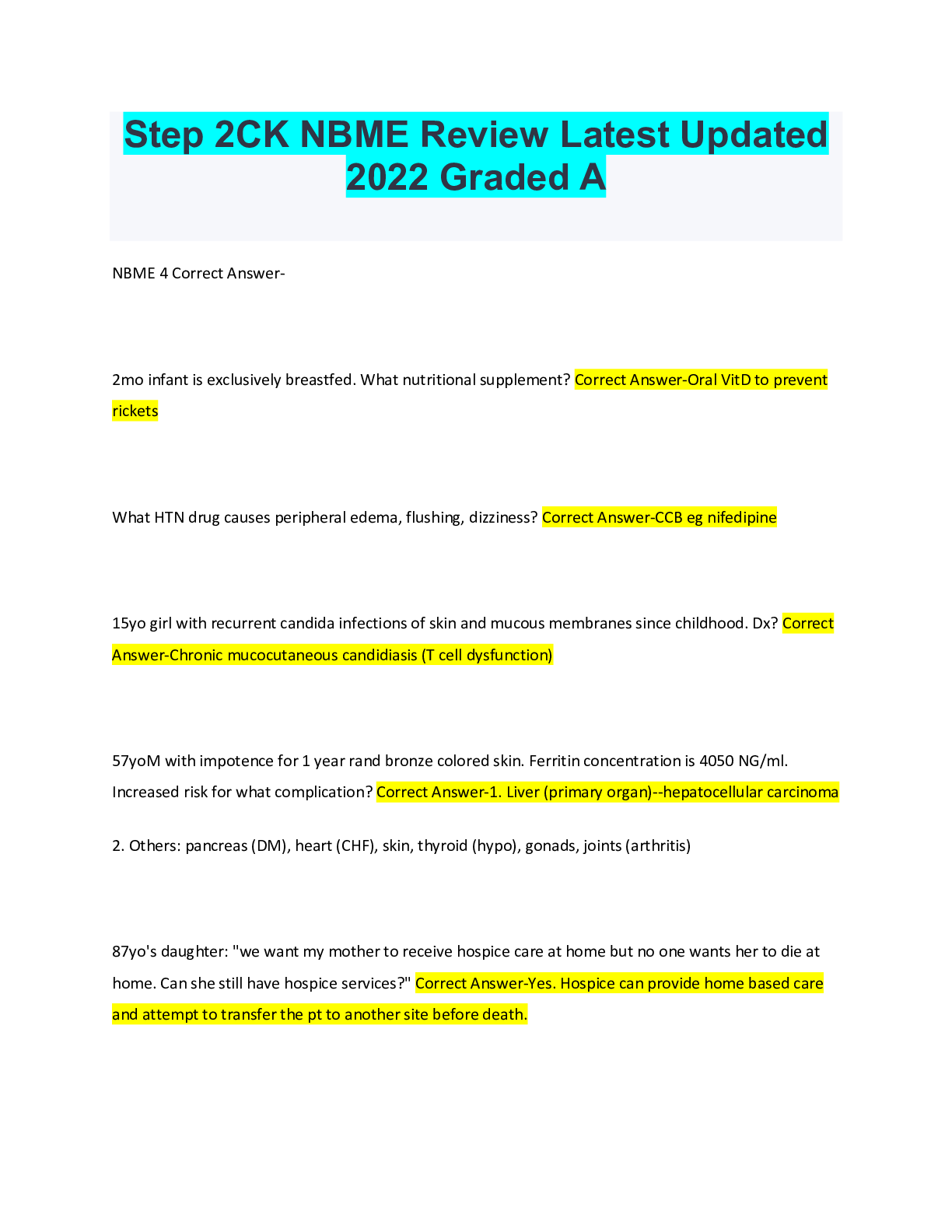

.png)
